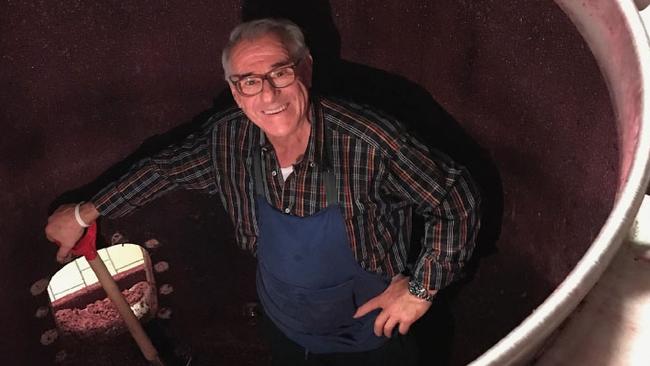Italian wines: Barolo’s Cannubi hill yields the finest flavours
Luciano Sandrone put Cannubi on the radar with his 1989 single vineyard Cannubi Boschis Barolo.

The autumnal Piedmontese sun rises over the Barolo hills, and one too many amaro (a bitter herbal liqueur) in Alba the night before has left my head as light as the hot-air balloons descending the valley. Trying for a shortcut, I push my way through some vines, and slide down a muddy slope and on to the main road.
A quick check of the map reveals I’ve just stumbled down the Cannubi hill. Cannubi: to the Italian wine lover, the name is legendary, and I repeat it in my head like a mantra as I make my way forward. From the word connubio (coming together), the Cannubi hill, sheltered by the higher slopes, exists in a unique microclimate. It’s a rendezvous point for the dense, sandstone-rich soils of Serralunga and Monforte to the south and the east, and the soft, calcareous soils of La Morra in the west. The wines of Cannubi’s five vineyards (Muscatel, San Lorenzo, Valletta, Cannubi and Boschis) are harmonious, dignified and ethereal. Several prestigious producers have holdings here.
I’m here to see the winery of Luciano Sandrone, who put Cannubi on the radar with his 1989 single vineyard Cannubi Boschis Barolo. American wine critic Robert Parker gave the wine 97 points. But with the release of the 1990 vintage, Sandrone achieved one of the wine world’s greatest honours: a perfect 100 from Parker.
Italy, like Australia, historically has not had an appellation system for single vineyards. In France’s Burgundy the vineyard’s name, coupled with the producer’s, is the most important indication of the nature of the wine, but it wasn’t until 2010 that Barolo became the second of only two zones in Italy to designate its vineyard areas for official classification. Barbaresco was the first in 2007. The role that the Sandrone family played in achieving this designation is indisputable.
Luciano Sandrone was the first member of his family to become a winemaker. This is rare for Barolo producers, who traditionally are born into the trade. The only family connection to winemaking for Sandrone was the garage, where he first began fermenting. His unprecedented passion for the juice led him to become cellar master of the historic Marchesi di Barolo. Today he has his own winery and 27ha of vines across Langhe and Roero. And now it is a family business: his brother Luca manages the vineyards while Luciano’s daughter Barbara runs the company’s administrative and promotional side.
There are thousands wines in Italy that come from singular vineyards, although none except those in Barolo and Barbaresco are recognised in an official capacity. I’d encourage you to seek them out. Smaller parcels on Sicily’s Mount Etna and Tuscany’s Chianti Classico zone offer some fine products. According to Luciano, his wines are about “tradition, heart and place”. For me, someone far from home, this expression rings true.
Try these wines
Sandrone Dolcetto d’Alba 2015. The Piedmont paradox is that a good year for wine is an ordinary year for truffles. So forget about eating them with your dolcetto because the 2015 vintage is considered to be a near perfect expression of the grape. There are lots of glossy purple fruit, herbal tints and a slight refreshing dryness to clean up the juice. Don’t wait too long to drink it. ($40-$50)
Sandrone Valmaggiore Nebbiolo d’Alba 2014. Roero’s Valmaggiore vineyard is a natural amphitheatre with a southern exposure that in places reaches a gradient of almost 50 degrees, allowing it catch the best of the sun. This steepness and the pure sandy soil require the vines to be densely planted. The nose is a seductive, musky perfume of wild strawberries, red flowers and forest herbs. But there’s also a sense of freshness in the acid. ($70-$80)
Sandrone Cannubi Boschis Barolo 2012. Soft red fruits, fuji apple, violets and mountain herb aromas are coupled with earthy notes of mushrooms and roasted chestnuts on the nose. The complex persistence of flavour draws out across the palate. The tannins are delicate but maybe a little dusty, a little too immediate in their youth. But just wait until that calming acid creeps up from behind to hug the tongue. This one takes time, but greatness is guaranteed. ($240-$260)
